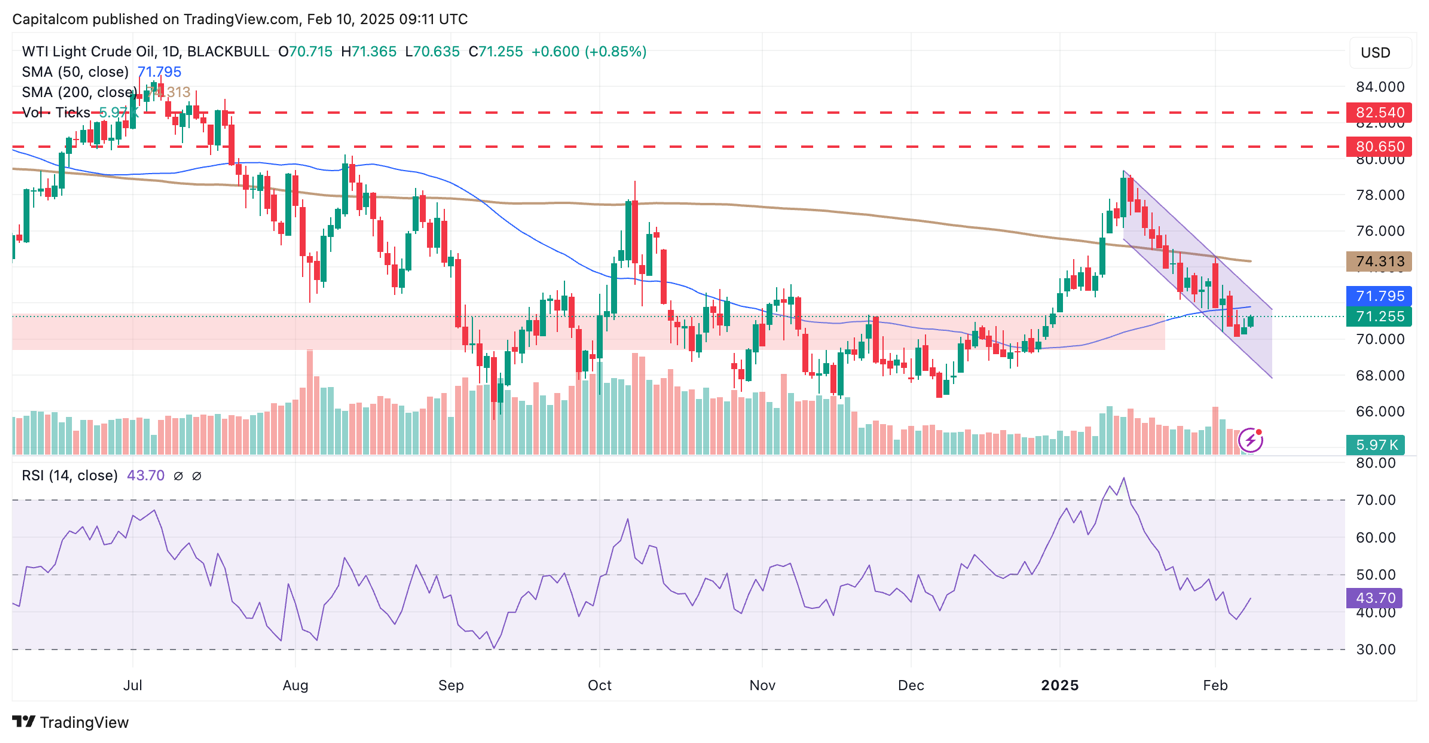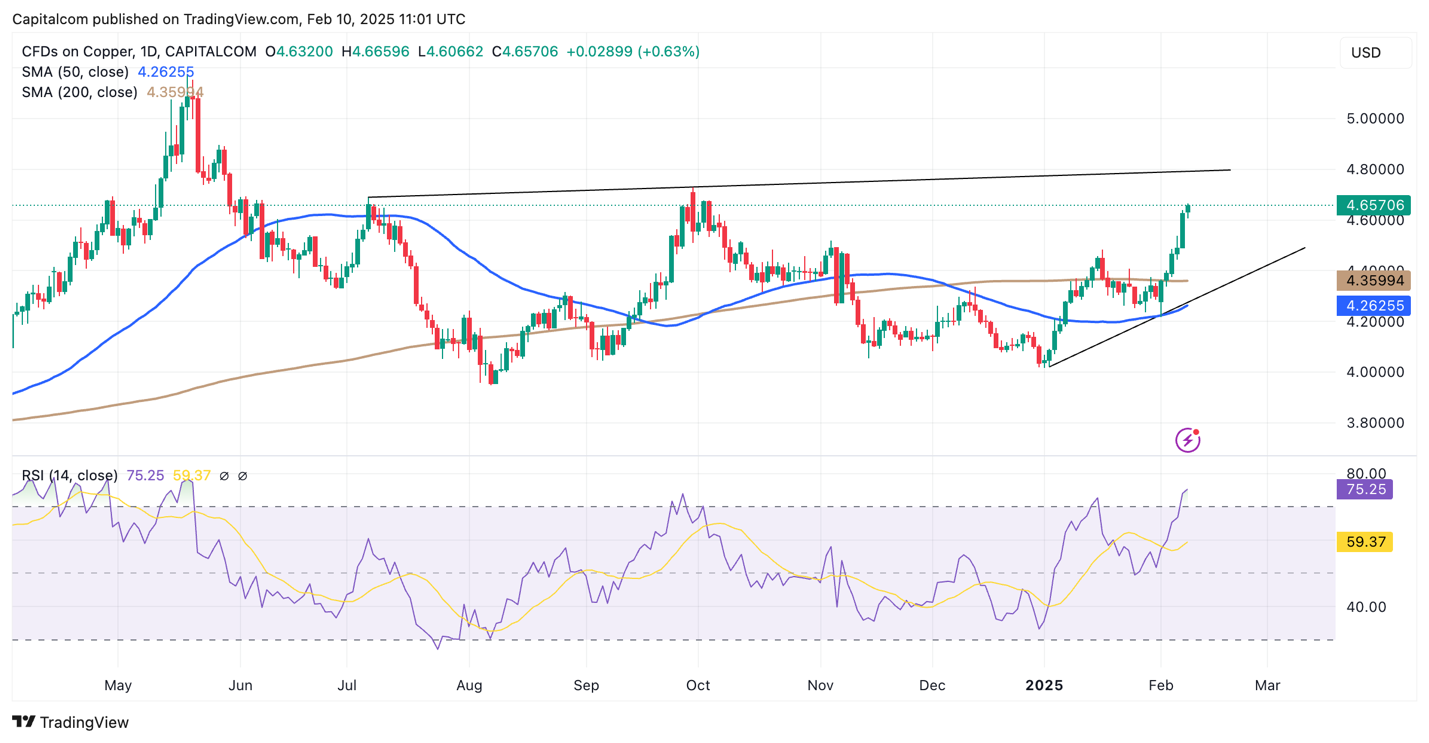Trump tariffs shake commodity markets: Oil and Copper latest
Potential trade disruptions as a result of increased tariffs have caused volatility in commodity markets.
The ongoing impact of Trump’s tariff plans continues to disrupt global markets, prompting traders to safeguard their portfolios. This shift in sentiment has led to a rotation away from risk in US equity markets and has significantly influenced commodity markets. Over the past week, oil and copper have been at the centre of attention.
OIL – “DRILL BABY DRILL”
President Trump has been vocal about his desire for lower energy prices, often using the slogan “drill baby drill” to advocate for increased US shale production. However, while the United States remains the world’s largest oil producer, production decisions ultimately rest with private-sector companies and their shareholders. These firms are approaching expansion with caution, balancing supply growth with financial discipline instead of engaging in unchecked production increases.
Additionally, rising production must align with demand, which appears to be softening. China, the world’s largest crude importer, has seen its oil demand level off due to slower economic growth and a strategic shift toward cleaner energy sources. This deliberate move aims to reduce the country's dependence on imported oil.
For now, the market impact of Trump’s push for increased production has contributed to declining oil prices. US crude has dropped nearly 12% in the past month, falling from $79 in mid-January to just above $70 by the end of last week. The looming threat of a tariff war has further dampened the crude oil outlook, as such conflicts are expected to weigh on global economic growth, thereby reducing energy demand.
From a technical perspective, US crude (WTI) is currently confined within a bearish channel, limiting upside movement around the $72 mark. Despite a bullish momentum on Monday, the RSI remains below its midline, suggesting that the recent price reversal is likely a short-term correction rather than a sustained trend shift. A breakout above $72.80 could signal a more sustained upward movement.
US Crude (WTI) daily chart

Past performance is not a reliable indicator of future results.
COPPER – SENSITIVITY TO TRADE WARS
Copper remains highly vulnerable to trade tensions. As a net importer of copper, the United States faces significant exposure to tariff-related disruptions. Following the US election results last November, the risk of tariffs has already introduced a premium to copper prices. If trade conditions deteriorate, demand could weaken, negatively impacting price movements.
Last week’s copper rally was driven by relief over Trump’s decision to delay tariffs on Canada and Mexico, easing immediate concerns. Additionally, China’s measured response to US actions further improved market sentiment.
Looking ahead, traders will closely monitor signs of slowing economic growth, as this could dampen demand for industrial metals. On the supply side, structural challenges such as underinvestment and supply inelasticity could exert upward pressure on prices.
From a technical standpoint, copper prices recently broke above 4.60 for the first time since October. At that time, the RSI entered overbought territory, leading to a reversal back to 4.35 before stabilizing. The ongoing uptrend suggests support may emerge between 4.30 and 4.35, with the 200-day SMA hovering around 4.3599. Resistance is anticipated near 4.7920, but the overbought RSI indicates potential selling pressure before reaching that level.
Copper daily chart
 Past performance is not a reliable indicator of future results.
Past performance is not a reliable indicator of future results.